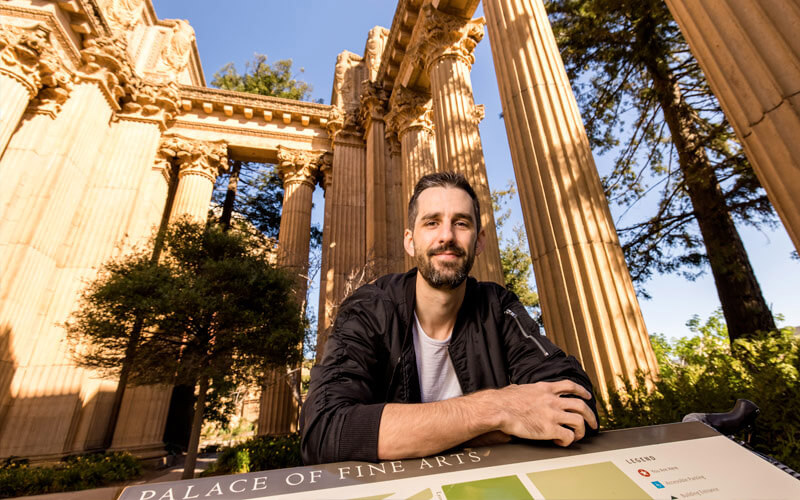Q&A with Turner
Turner Kirk is Senior Growth Marketing Manager at Earnin. Before his current role, Turner drove growth at Smule for over eight years, raising 50 million monthly active users and $100 million in yearly revenue. After extensive feats at Smule, Turner’s love for all things mobile performance and growth data fell into place. In this Q&A, Turner shares how he scaled user acquisition at his former job and optimized monetization for MOOV INC’s Sanity & Self app.
Read Turner's latest article: "Developing a Content Strategy to Increase Retention & Conversion"
In your own words, tell us about the app(s) that you manage?
Sanity & Self is the #1 self-care app to get better sleep, heal heartbreak, and practice self-love. We are a mission-driven emotional wellness and personal development app for women, with 1,000 sessions of high-quality audio content recorded by female experts in various fields. Each session helps listeners navigate the most common issues they face today. Stress, anxiety, relationships, self-love, career development, and how to "give less f#$*s" to name a few.
How did you get started in mobile marketing?
I met the founders of Smule while doing my Master’s degree in music engineering at Stanford. I intended to be an engineer when I graduated, but fate would have it that mobile marketing was my true calling! This was back in 2008, just 3 months after the App Store released.
Fun fact: I was riding a tricycle around San Francisco's financial district, trying to get people to download our first app Sonic Lighter for $0.99. The app was a tough sell since hardly anyone back then had a credit card connected to their iTunes account, plus the 2G / Edge Network was so slow it was nearly impossible to download an app. Oh how far we've come!
What do you like most about mobile marketing?
The potential to have a positive impact on millions of people all over the world with nothing but a first-class mobile app and some marketing spend. That and funnel optimization.
What does it take to succeed in mobile marketing?
Have a growth mindset. Mobile marketing is like the weather in Portland Oregon, no matter what it is like now, just wait fifteen minutes and it will be completely different. To be successful, continually learn, adapt, experiment, and most importantly, stay connected.
What strategies work best to convert installs into engaged app users?
Start with a high-quality product, then focus on a delightful and cohesive user journey from the first ad impression to the First Time User Experience (FTUE). It is also imperative to analyze user behavior to identify opportunities for growth and engagement.
People use apps in ways we never imagined, and these behaviors can inform new product features or shift focus to areas of untapped high engagement potential. Once you identify these types of behavior, talk to your users (if possible) and get an idea of what drove them to use the app the way they did. You can only tell so much about a person's motivations through data analysis.
In the past year, what is one tip you can share which made the biggest performance difference for your UA strategy?
Dive deeper into age segmentation and creative testing. For Sanity & Self, age is highly correlated to the content type people are interested in. We initially targeted a broad age group for all creatives but began splitting audiences into a few age groups. Over time, we saw that messaging related to various pain points performed differently across the age groups—both in CTR and in-app conversion.
For example, messaging related to Stress and Anxiety performed well in the 25-34 age group but not so well in the <25 group. Discovering this earlier enabled us to hone individual group messaging and increase performance overall. Of course, too many age groups means the audiences get too small, or the number of tests ran becomes unmanageable. Balance is key.
What advice can you offer marketers to successfully re-engage mobile app users?
Get to know your users as well as you know your friends. Or, buzzword alert, "become customer-obsessed." Suppose you have a solid idea of what users’ interests and motivations are concerning your app. In this case, you will have more success at engagement and offering the best activating experiences when users are most receptive. This will change regularly, so staying connected to the users and shifts in the industry will serve you well here.
What’s your top tip when it comes to mobile ad creative?
Testing, testing, testing. Experimentation is most important when it comes to creative.
Testing is instrumental when targeting multiple personas or audiences with varying messaging around pain points that your app addresses. There are infinite ways to convey any message, so the most methodological way to discover which messages work best with each audience is to test and look at the data.
Keep the variables to a minimum and use a benchmark to test against to see when something is working or not clearly. For example, we have content related to various relationship issues and want to acquire users interested in this content. Our best performing creative related to relationships focused on the message “get over your ex.” As we came up with new creative and messaging for the relationship category, we regularly compared the “get over your ex” version against new concepts as a benchmark. Doing so ensured all new creatives were performing similarly, if not better.
What are your top 3 go-to resources for keeping up with the mobile ad tech industry?
Liftoff’s blog (of course), Mobile Growth Association, and App Growth Summit.






















